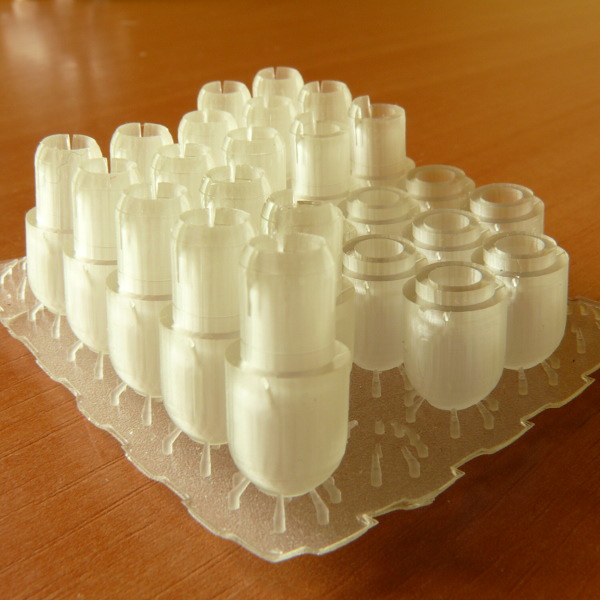
Tenzegrita is a field of construction geometry based on the fact that some edges of the construction are subjected only to tension. Hence its name. To ensure that the construction is sufficiently stable in all considered load cases, it is necessary to choose the correct topology of edges, along with the selection of the material from which they will be made, to meet the strength requirements at each node/vertex of the construction.

The model construction consists of six rigid edges - longer sides of 2D faces with dimensions in the golden ratio (simplified as A faces), placed on all three axes so that all faces are perpendicular to each other. Tensile edges are created by connecting three adjacent vertices of the faces (in each octant), forming triangular facets. In practice, this means constructing the vertices of the dodecahedron connected in the mentioned way. Eight facets in the octants ("string") form the 8 basic faces of the dodecahedron, and the remaining 12 would be created by complementing the shorter edges of three A faces, but they are not needed for this construction.

Rigid edges are made of aluminum tubes with an outer radius of 4 mm and an inner radius of 3 mm. Tensile edges are made of nylon thread with a radius of 0.05 mm.

The connection of edges is made with parts (vertices - nodes) 3D printed from resin. Nodes have a pin with a lock for connection to a rigid edge. In this case, the lock is formed only by flexible lamellas at the end of the pin. Tensile edges are connected to nodes through holes, where they are "locked" with cured resin. The holes are in precise positions and angles so that the edges point directly to the vertex point. By tensioning the tensile edges and compressing the others, the construction is stabilized by evenly distributing the forces. Specifically, when assembling this model construction, it was necessary to first create an auxiliary construction that fixed the edges during the resin curing process. Then it was possible to remove the auxiliary construction. For larger models, the construction stabilizes itself by gradually tensioning the tensile edges to their correct length. Assembling a model of this size (just slightly larger than a matchbox) is a "dexterity" challenge, as installing and tensioning tensile edges, with a diameter of a human hair, requires a special procedure.

The construction also served as a case study for the automatic generation of parts (here mainly vertices) using the system's methodology, where it is necessary to use different types of edges, and therefore also connections, on one part of the node. The system generates parts of edges with the required radii by assigning this attribute to the entire group of edges in the 3D network. Node parts are then precisely calculated as the "materialization" of the connections of edges at common vertices. To calculate the shape of the node, it is necessary to take into account the mutual angles of the edges, their radii, and the required types of connections. At the same time, all nodes of the construction (in the initial 3D network from which the construction set is generated) are marked as one type by the generator, because their significant attributes are within the defined tolerance. These regular 3D networks make it possible, within tolerance, to create only a few types of parts from all edges and vertices contained in them. In the example construction, only two types of edges and one type of node emerge. Edges are either rigid (aluminum) or tensile (nylon). There are a total of 6 rigid edges and 24 tensile edges. There are 12 nodes in total.

